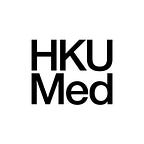HKUMed Surgeon and Engineer Create AI-Driven Scoliosis App
A “perfect example” of collaboration between a HKUMed clinician and an engineer has yielded an app that uses artificial intelligence to monitor and treat a common spinal deformity.
Professor Jason Cheung Chairperson of the Department of Orthopaedics and Traumatology and Professor Grace Zhang, Coordinator of Translational Research in the same department, have combined their expertise to create the AlignPro app for patients with scoliosis, a progressive condition causing the spinal column to twist.
“[At] HKUMed, we have this dogma where a clinician and a basic scientist working together will create the best outcomes, and this is a perfect example,” said Professor Cheung, who specialises in paediatric and adult spinal deformities. “Myself as a clinician bringing forth the problems that we face in the clinical arena and having Professor Zhang as an engineer provide solutions is the best form of collaboration.”
Their partnership builds on HKUMed’s long-standing expertise in spinal diseases, combining this history with the promising future for AI and big data in medicine.
HKUMed’s international reputation in spinal conditions first drew Professor Zhang to the Faculty. The biomedical engineer was exploring the use of AI in the treatment of scoliosis in Australia but required larger data sets to train her models.
A chance meeting with Professor Keith Luk, former Head of the department, at a conference encouraged the engineer to join HKUMed. Professor Luk made a convincing argument that the Faculty’s access to data from Hong Kong hospitals and the potential for partnerships in mainland China would provide new avenues for her work.
Professor Zhang joined HKUMed in 2018 where she built the Digital Health Laboratory staffed by a team of specialists in AI and big data to deploy these technologies to address clinical needs.
“We are actually very keen to know the real clinical needs, real doctors’ needs and real patients’ needs,” Professor Zhang said. “We don’t want to just develop an AI because engineers think that is important and then we start to look for the application in a clinical setting.”
When disruptions brought on by the COVID-19 pandemic prevented some young patients from accessing timely scoliosis treatment, Professor Cheung and Professor Zhang set out to create an app to prevent delayed diagnoses.
Fortunately, the treatment of adolescent idiopathic scoliosis, the most common form of the condition which occurs in children aged between 10 and 18, lends itself to the use of AI and app-based monitoring.
Currently, patients with scoliosis must make clinic visits every three to six months for X-rays to allow doctors to check whether interventions have halted the twisting in their spines.
These regular clinic visits and measurements taken by Professor Cheung provided a huge data set on which Professor Zhang’s AI models have been trained.
Now in use in mainland China and available privately in Hong Kong, scoliosis patients can use the AlignPro app to upload their X-rays or a simple photograph of their back for analysis by the AI.
The AlignPro’s AI model analyses the shape of the patient’s spine and shares the results and an AI-generated exercise prescription with the doctor for final verification.
“The mobile app, you can imagine it as a spine specialist going back home with them,” Professor Zhang said. “So just on their fingertips they will be able to access expert quality and care.”
The app’s automated process provides reassurance to patients, reduces clinic visits and minimises exposure to radiation from X-rays, Professor Cheung said. It also allows clinicians to prioritise patients who need urgent follow-ups.
While the pair champion technology to improve care and empower patients, they emphasise the vital role of patient-doctor interactions.
“We’re not trying to replace the doctor, the professional, who provides the advice and also the social interaction,” Professor Cheung said.
The clinician-scientist and biomedical engineer are now working to fine-tune the AlignPro to maximise patient adherence through reward systems, such as more doctor feedback.
Additionally, they are exploring how to apply these technologies and their collaboration beyond the spine.
“We’re working towards expanding beyond spine and scoliosis to other orthopaedic conditions,” Professor Cheung said. “And we hope we can bring this technology to further the other fields in medicine.”
